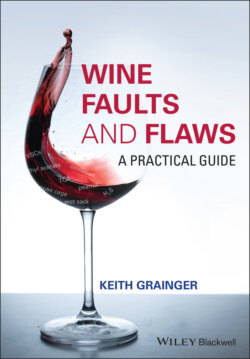Читать книгу Wine Faults and Flaws - Keith Grainger - Страница 51
2.4 The Use of a Structured Tasting Technique and Detection of Faults
ОглавлениеA structured tasting technique for wine assessment is valuable in ensuring all the characteristics of a wine are considered by a taster, the members of a panel of tasters, and groups of panels, are using the same criteria in their assessments. The usual sequence of tasting is to examine the appearance of the wine, followed by the nose, then the palate. Conclusions about the wine may be summarised, and these will include considerations as to quality. A fault or flaw may be revealed at any or all stages of the tasting assessment, depending upon the defect in question. For example, oxidation may manifest itself on appearance, nose, and palate. Taints by haloanisoles cannot be seen, but will certainly be smelt and tasted. The flaw of excessive acidity, other than volatile acidity, will not be seen or smelt but will be disclosed upon the palate. It is possible for wines to exhibit multiple faults. Some faults, particularly if at a low level, may not reveal themselves upon first assessment, but become apparent upon returning to the wine after some minutes. In other cases, a characteristic that initially appears to represent a fault may dissipate after the wine has been oxygenated and kept in the glass for a few minutes. The taster should note the indicators of each fault or flaw when suspected or confirmed at each stage of the organoleptic assessment.
